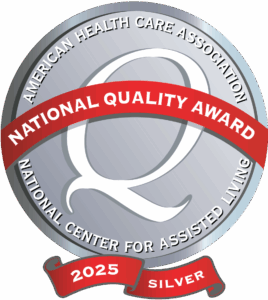Falls, especially among our senior population, can be a significant health issue leading to serious injury, a decline in overall health and even death. The CDC reports that one in four adults over age 65 report a fall each year, and so much of the time these falls can be prevented. In this article, we’ll explore various strategies and tips to help reduce the risk of falls among seniors, promoting a safer and more independent lifestyle.
- Home Modifications: Start by assessing the senior’s living environment. Make necessary modifications to reduce fall risks, such as installing handrails on staircases, clearing clutter, securing rugs, and adding grab bars in bathrooms. Ensure that pathways are clear of obstacles and well-lit to enhance visibility, and that your loved one keeps a phone and a flashlight near their bed at night. Use a sturdy bathroom seat in their shower if your loved one is unsteady while showering.
- Regular Exercise: Encourage seniors to engage in regular exercise to improve strength, balance and flexibility. Activities like walking, swimming and tai chi are excellent options that can contribute to better overall health and reduce the risk of falls.
- Physical Therapy: At American Senior Communities, our physical therapists are experts in assessing a senior’s risk for falling, and recommending exercises to help strengthen and improve their mobility, muscle strength and balance. Our physical therapists use a variety of tools like the Moflex flexibility training device, which focuses on improving ankle range of motion which improves balance. Physical therapy is particularly important when recovering from a prior fall. Utilizing the services of a post-acute, short-term rehabilitation community can provide additional support should you or your loved one need it before returning home.
- Medication Management: Review medications regularly with healthcare providers to identify potential side effects or interactions that could contribute to dizziness or imbalance. Seniors should follow their prescribed medication schedules diligently.
- Eye Exams: Regular eye check-ups are crucial for maintaining good vision. Poor eyesight can contribute to falls, so it’s essential to address any visual impairments promptly. Ensure that seniors have the right prescription glasses and that their eyewear is up to date.
- Foot Care: Proper footwear plays a vital role in reducing the risk of falls. Encourage seniors to wear supportive shoes with non-slip soles. Regular foot check-ups can also identify issues like bunions or corns that may affect balance.
- Stay Hydrated: Dehydration can lead to weakness and dizziness. Seniors should maintain adequate fluid intake throughout the day. Encourage them to carry a water bottle and set reminders for hydration.
- Regular Health Check-ups: Regular check-ups with healthcare providers can help identify and address health issues that may contribute to falls. This includes monitoring blood pressure, addressing conditions like osteoporosis and managing chronic illnesses.
- Assistive Devices: If necessary, consider the use of assistive devices such as canes or walkers. Ensure that these devices are in good condition, properly adjusted, and used consistently to provide the necessary support.
- Emergency Response Plan: Develop an emergency response plan in case of a fall. Ensure that seniors have access to a phone or wear an emergency alert device and that they know how to use it.
ASC’s Angi Ferguson, Director of Clinical Programming & Training on Fox 59’s IndyNow.
Reducing the risk of falls among seniors requires a comprehensive and proactive approach. At American Senior Communities, it is our highest priority to empower seniors with the knowledge and support that contributes to their living a safer and more independent lifestyle. For more information on rehabilitation and physical therapy services at American Senior Communities visit here.




